
Phishing training for employees plays a crucial role in mitigating phishing attacks.
Consider Upsher-Smith’s $39 million loss when an employee, tricked by a CEO-spoofing email, nearly transferred $50 million.
I think that with proper phishing awareness training, they could have identified red flags and prevented the near-disaster.
Given the gravity of such issues, in this blog post, I will help you understand everything about phishing training.
Let’s start.
What Is Phishing Awareness Training?
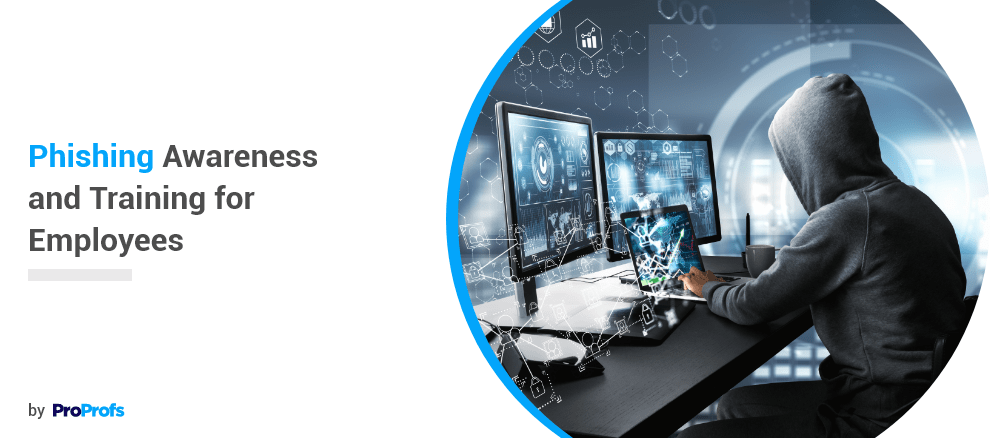
It is a type of security awareness training that teaches employees how to detect and prevent phishing emails and other cyberattacks. The idea is to help employees steer clear of deceptions that trick people into revealing sensitive information or compromising their devices.
Phishing training for employees can help reduce the risk of phishing by educating employees on how to protect themselves and the organization from these attacks.
Also, it fosters a culture of security awareness and responsibility among employees, which can improve the organization’s overall cybersecurity posture.
Activity: How Aware Are You About Phishing? Take this quiz.
Why Is Phishing Training Important for Employees?
Phishing is one of the most common types of cyberattacks, accounting for 36% of all U.S. data breaches.
Such attacks can cause significant financial, reputational, or operational damage to organizations and individuals and expose them to other threats such as malware, ransomware, or identity theft.
In this context, let’s look at why employee phishing training is vital for employees.
1. Phishing Attacks Are Sophisticated and Evolving
Gone are the days of easily identifiable phishing attempts riddled with grammatical errors and poorly disguised urgency.
Cybercriminals are becoming increasingly sophisticated, mimicking trusted brands and personal contacts and even using psychological manipulation to trick victims.
I’ll give you an example here:
Subject: Your Netflix account has been suspended
From: Netflix Support netflix@support.com
Dear Netflix user,
We regret to inform you that your Netflix account has been suspended due to a problem with your payment method. Please update your payment information as soon as possible to restore your access.
To update your payment information, please click on the link below and follow the instructions:
Update your payment information
Please note that this link will expire in 24 hours. If you do not update your payment information within this time, your account will be permanently deleted, and you will lose access to all your favorite shows and movies.
We apologize for any inconvenience this may cause and thank you for your cooperation.
Sincerely,
Netflix Support Team
This email is an example of a phishing attack that tries to impersonate Netflix, a trusted brand, and uses urgency and fear to manipulate the recipient into clicking on a malicious link.
The link will likely lead to a fake website asking for the recipient’s credit card details or other personal information, which the attacker can use to steal money or identity.
The email address, the link, and the threat of account deletion are all red flags that indicate this email is illegitimate.
A real Netflix email would use a different domain name, a secure URL, and a more polite tone.
Provide training to your workforce so they have the necessary skills to identify subtle red flags, inconsistencies in email addresses, and suspicious sender names, allowing them to analyze emails and avoid falling prey to scams.
2. Phishing Doesn’t Discriminate
No matter the position or experience level, no employee is immune to phishing. High-level executives often fall victim to cleverly disguised attempts.
By incorporating real-life phishing simulations into your training program, you can provide employees with hands-on experience in identifying and responding to these attacks.
This practice helps them develop critical thinking skills and the confidence to make informed decisions when faced with suspicious emails.
3. One Click Can Have Devastating Consequences
A common misconception is that clicking on a phishing link is just a minor inconvenience. Nothing could be farther from the truth.
A single click can trigger a chain reaction of devastating consequences, including:
- Data breaches: Hackers can access confidential company information, including employee data, financial records, and intellectual property, causing immense damage to your organization.
Try this data protection training course. It covers data protection regulations, administrative, physical, and technical safeguards, and common data threats. The training course equips learners with practical steps to prevent data breaches.
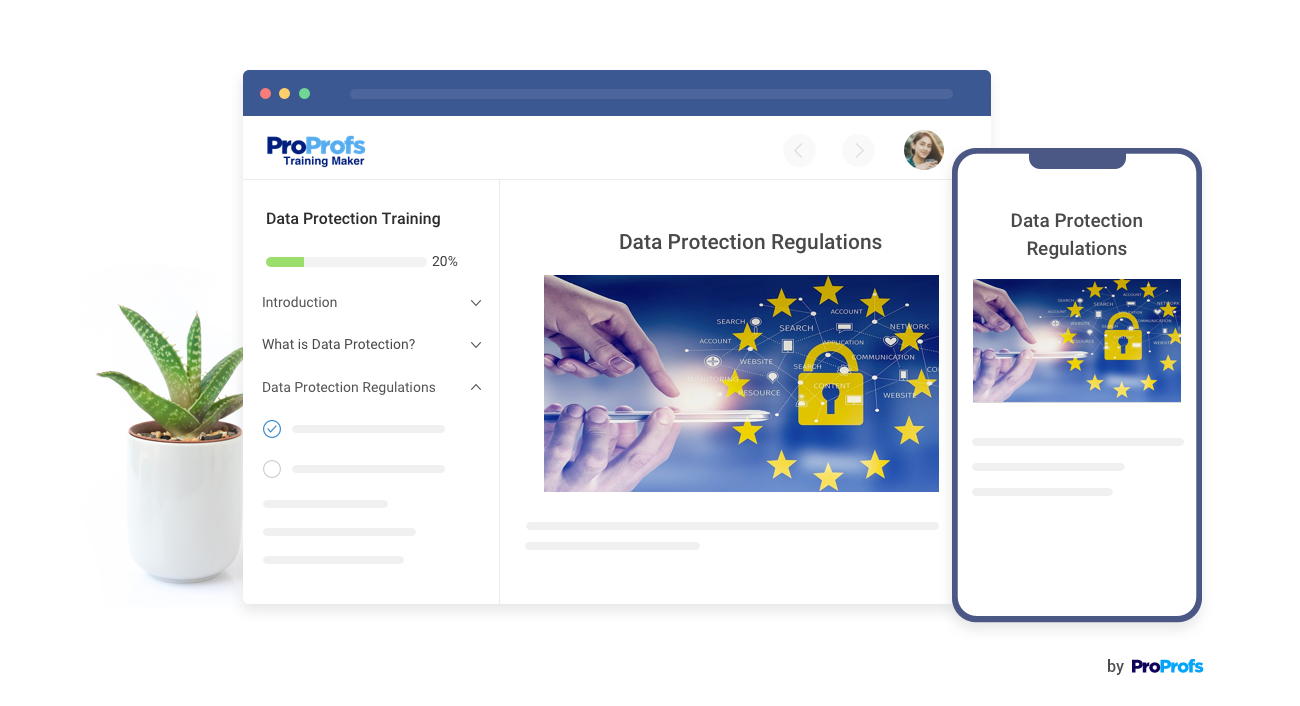
- Malware infection: Clicking on a malicious link can download malware onto your computer, giving hackers control over your device and stealing sensitive information, potentially compromising your entire network.
- Financial losses: Phishing emails often trick employees into disclosing financial information or transferring funds directly to the attacker’s accounts, resulting in significant financial losses.
Educating your employees about the potential consequences of clicking on malicious links can instill a sense of caution and awareness, preventing costly and damaging incidents.
4. Building a Culture of Cybersecurity
Phishing training goes beyond individual knowledge; it’s about fostering a culture of collective responsibility and vigilance within your organization.
You create a collaborative environment where security becomes a shared priority by equipping everyone with the knowledge and tools to identify and report phishing attempts.
This sense of collective responsibility fosters a more secure environment for everyone and promotes a proactive approach to cybersecurity.
Here’s a phishing training course for you: Security Awareness Training. It addresses issues related to personal devices, password usage, phishing attacks, suspicious URLs, social engineering, and data leakage. This course is designed to empower employees with the best practices to fortify against security vulnerabilities.
5. It’s an Investment Worth Making
The cost of a data breach can be astronomical, encompassing financial losses, damage to reputation, and legal repercussions. Investing in comprehensive phishing training is a proactive and cost-effective way to prevent such occurrences.
By empowering your employees to become cybersecurity champions, you build a stronger, more resilient organization, saving your company significant resources in the long run.
Remember, cybersecurity is a continuous journey requiring constant learning and adaptation. By prioritizing phishing training and providing regular updates, you can ensure your employees remain vigilant and prepared to face the ever-evolving threat.
Top 8 Phishing Training Examples and Types

As a professional in the training industry, I’ve seen firsthand many organizations across industries delivering phishing training.
Let me give you some of those phishing training examples.
1. Phishing Awareness Training
This type of phishing training program covers the basics of phishing, like what it is, why it’s dangerous, and how to prevent it.
Participants learn about the common tactics and techniques and how to recognize and report them.
You can try the ProProfs Phishing Training Course, as it covers diverse aspects, including the definition of phishing, email phishing, senior management phishing, spear phishing, voice phishing, and strategies to combat phishing attacks.
The comprehensive curriculum incorporates relatable scenarios and end-of-chapter assessments.
2. Email Phishing Training
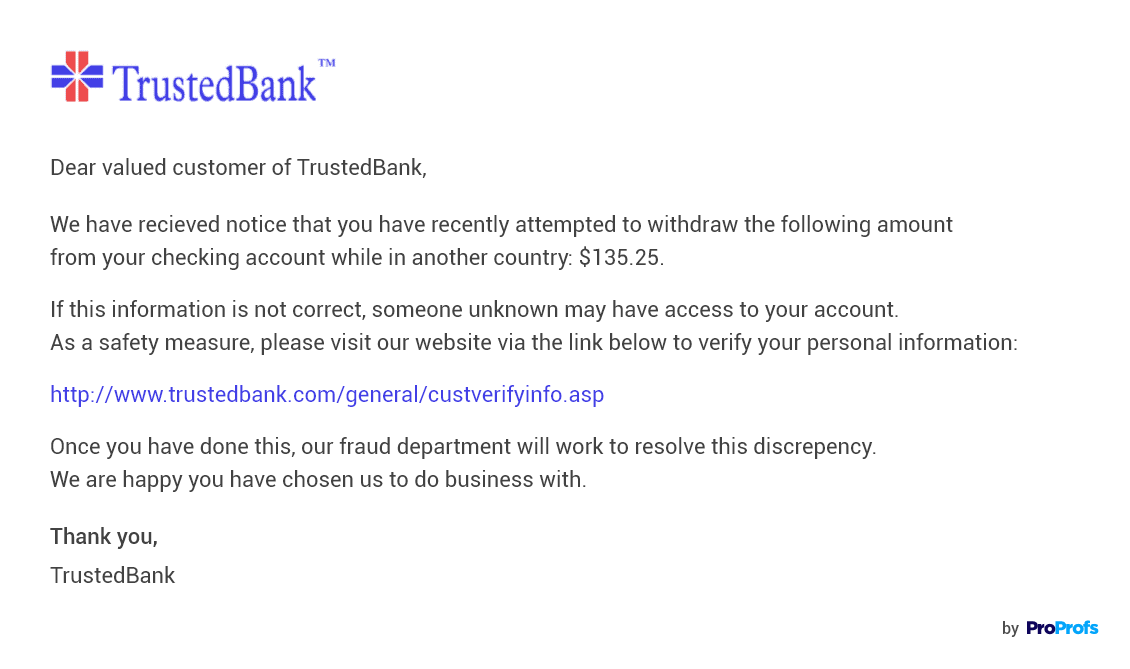
Imagine you get an email that looks like it’s from your bank, asking you to update your password.
Or maybe it’s from your boss, asking you to click on a link.
In email phishing training, you learn how to spot these fake emails by looking at things like the sender, the subject line, and the content of the email.
3. Spear Phishing Training
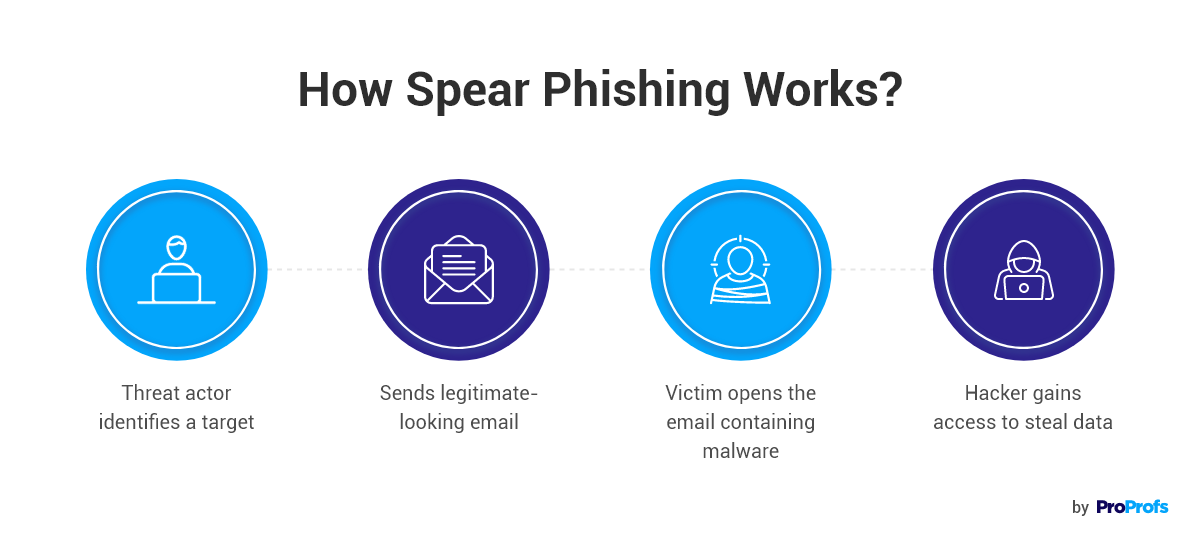
Hackers use the information they find online, like your social media profiles, to make their emails look even more real. They might send you an email that looks like it’s from a professional organization you’re a member of or a project you’re working on.
This is where things get a little more personal. Hackers use details from your social media, making their emails seem super real. It’s trickier because they tailor the message just for you, trying to get you to click on something or share important information.
By providing spear phishing training, your employees learn to be extra careful and always verify the authenticity of an email before trusting it.
4. Vishing (Voice Phishing) Training
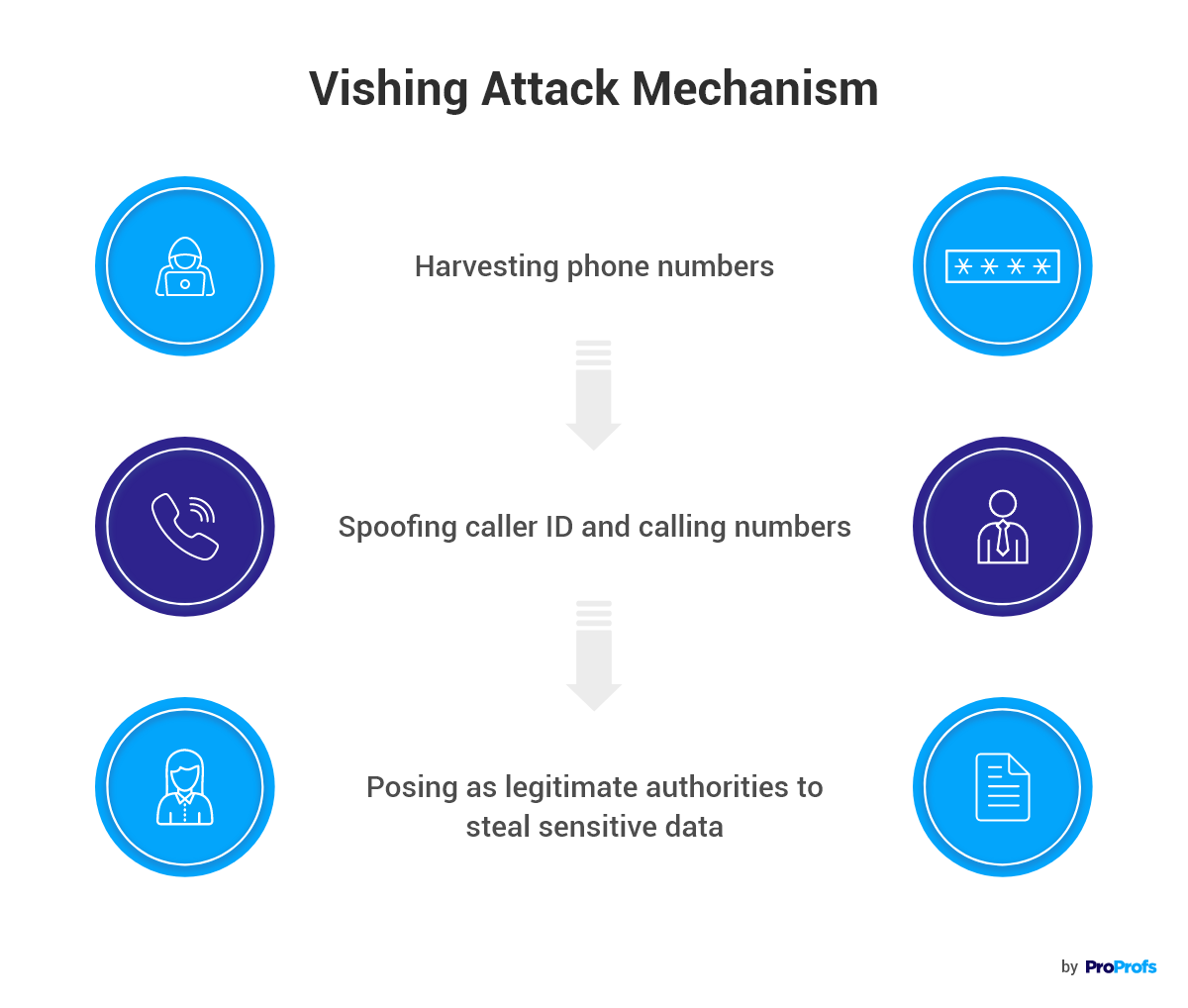
Have you ever gotten a phone call from someone claiming to be from your IT support or your bank? They might pressure you to give them sensitive information or do something you shouldn’t do.
That’s what vishing phishing is all about.
These scammers may employ sophisticated techniques to mimic official entities, creating a sense of urgency to prompt immediate action. It’s crucial to remain vigilant and verify the authenticity of such calls. Falling victim to vishing phishing can lead to identity theft, financial loss, or unauthorized access to sensitive accounts.
In 2022, a phishing campaign targeted Office 365 users by impersonating the US Department of Labor (DoL). The attackers sent emails that claimed to contain information about the Family and Medical Leave Act (FMLA) and asked the recipients to click on a link to view a document. The link led to a fake Office 365 login page that harvested the users’ credentials.
With Vishing phishing training, you can teach your employees how to identify such nefarious attempts and respond safely.
5. Smishing (SMS Phishing) Training
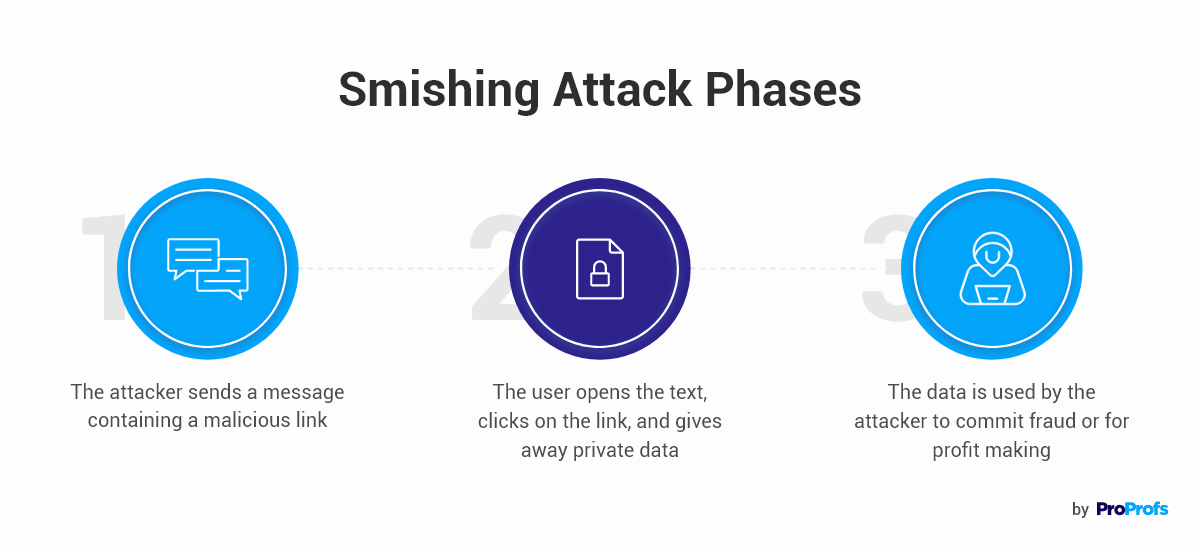
These days, hackers are using text messages to scam us too.
Just a few years ago, a smishing campaign impersonated the US Census Bureau and asked recipients to fill out a survey about the COVID-19 pandemic. The survey contained a link that downloaded malware onto the users’ devices, allowing the attackers to steal their personal and financial data.
In SMS phishing, you might get a message that looks like it’s from your mobile service provider or a delivery service, asking you to click on a link or confirm your details.
Through phishing awareness training focused on smishing, you learn to be cautious about unexpected messages and avoid clicking on suspicious links.
6. Phishing Simulation Training
What if you could practice spotting phishing attempts in a safe environment? That’s what simulation training does!
You can create and send fake emails, calls, or messages to yourself or your colleagues and see how they respond. This is a great way to identify areas where you need to stay alert.
Phishing simulation programs can be tailored to specific industries, roles, or organizational needs. This customization allows organizations to address their unique security challenges effectively.
After the simulation, participants receive feedback on their performance. This may include information on which phishing emails they clicked on, how quickly they reported suspicious activity and tips for improving their phishing detection skills.
7. Social Engineering Training
Social engineering is often used in phishing attacks, and it is where hackers try to exploit your emotions, biases, or trust.
For instance, in 2020, Shark Tank television judge Barbara Corcoran was tricked into a nearly USD 400,000 phishing and social engineering scam. A cybercriminal impersonated her assistant and sent an email to the bookkeeper requesting a renewal payment related to real estate investments. The cybercriminal used an email address similar to the legitimate one.
To avoid such instances, my organization regularly deploys another type of training – social engineering training.
This training teaches you to recognize and protect yourself from these tactics.
You learn about the different types of social engineering, such as pretexting, baiting, quid pro quo, and tailgating, and how to avoid falling for them.
8. Red Team Exercises
Think of this as a real-world test of your organization’s security.
Like the simulation training, these exercises involve simulated attacks that mimic what real hackers would do. In other words, it is where organizations test their defenses against phishing attacks. This is a great way to identify vulnerabilities and improve your security posture.
Phishing is an ever-evolving threat, so it is vital to stay up-to-date on the latest trends in cybersecurity. By incorporating real-world examples into your training, you can make it more effective and prepare yourself and your organization to fight against these attacks.
Remember: Phishing training for employees is not a one-time event. It is an ongoing process, as hackers constantly change and improve their methods..
5 Phishing Awareness Training Solutions
In my previous stint as a mentor for new hires, I have used a variety of training solutions for phishing awareness training as a part of skill development initiatives.
Each has offered unique benefits and helped me deliver effective and engaging training sessions.
Here are the top five solutions that I have tried.
1. ProProfs Training Maker
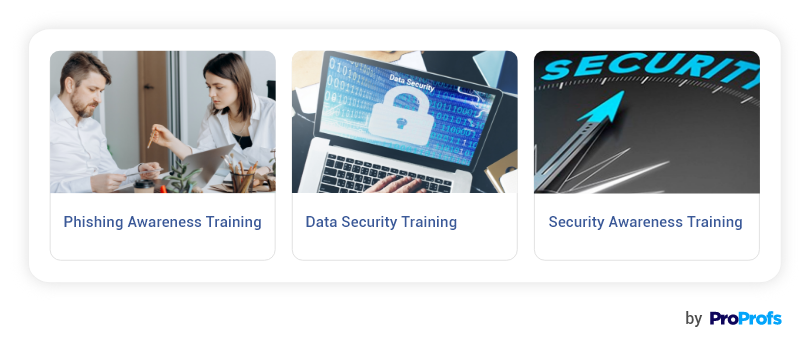
ProProfs Training Maker, for instance, has been instrumental in creating phishing courses tailored to the specific needs of my audience.
The LMS allowed me to create customized phishing courses, track user progress, and generate reports.
You can use the ready-made courses and templates from the library or upload your PPTs, videos, and PDFs.
The tool supports multiple languages, instructors, and reports. You can also use the virtual classroom software to administer training from anywhere, anytime.
Quizzes and assessments to test learners’ knowledge and prevent content skipping are another feature of the tool
Watch: How to Create an Online Course from Scratch
2. KnowBe4
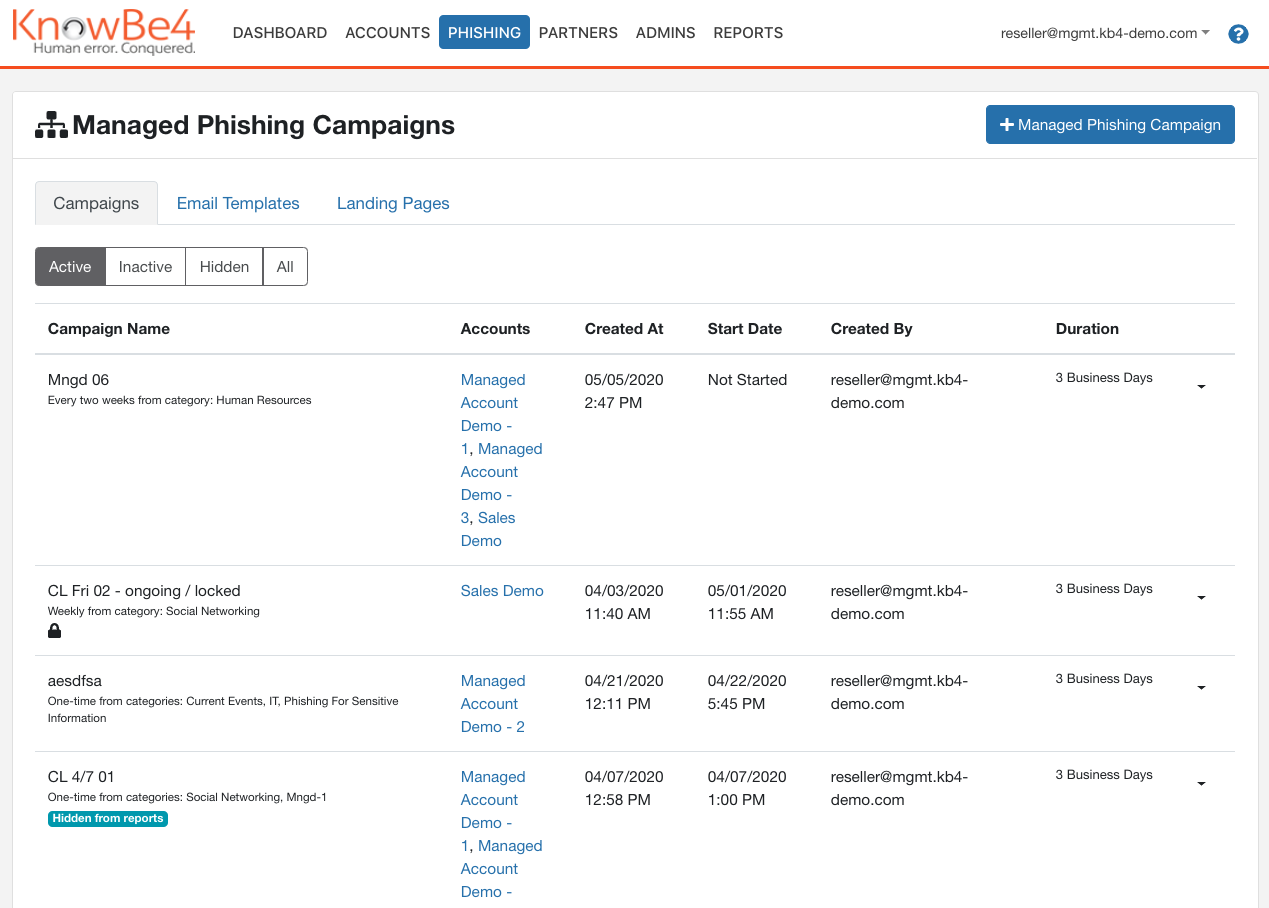
This industry leader impressed me with its realistic phishing simulations. I could mimic real-world attack scenarios, exposing participants to diverse phishing tactics and techniques.
The interactive training modules and gamified elements fostered a dynamic learning environment, while the quizzes helped measure knowledge retention and identify areas for improvement.
KnowBe4 can effectively empower trainees to recognize and report all kinds of phishing attempts.
3. Infosec IQ
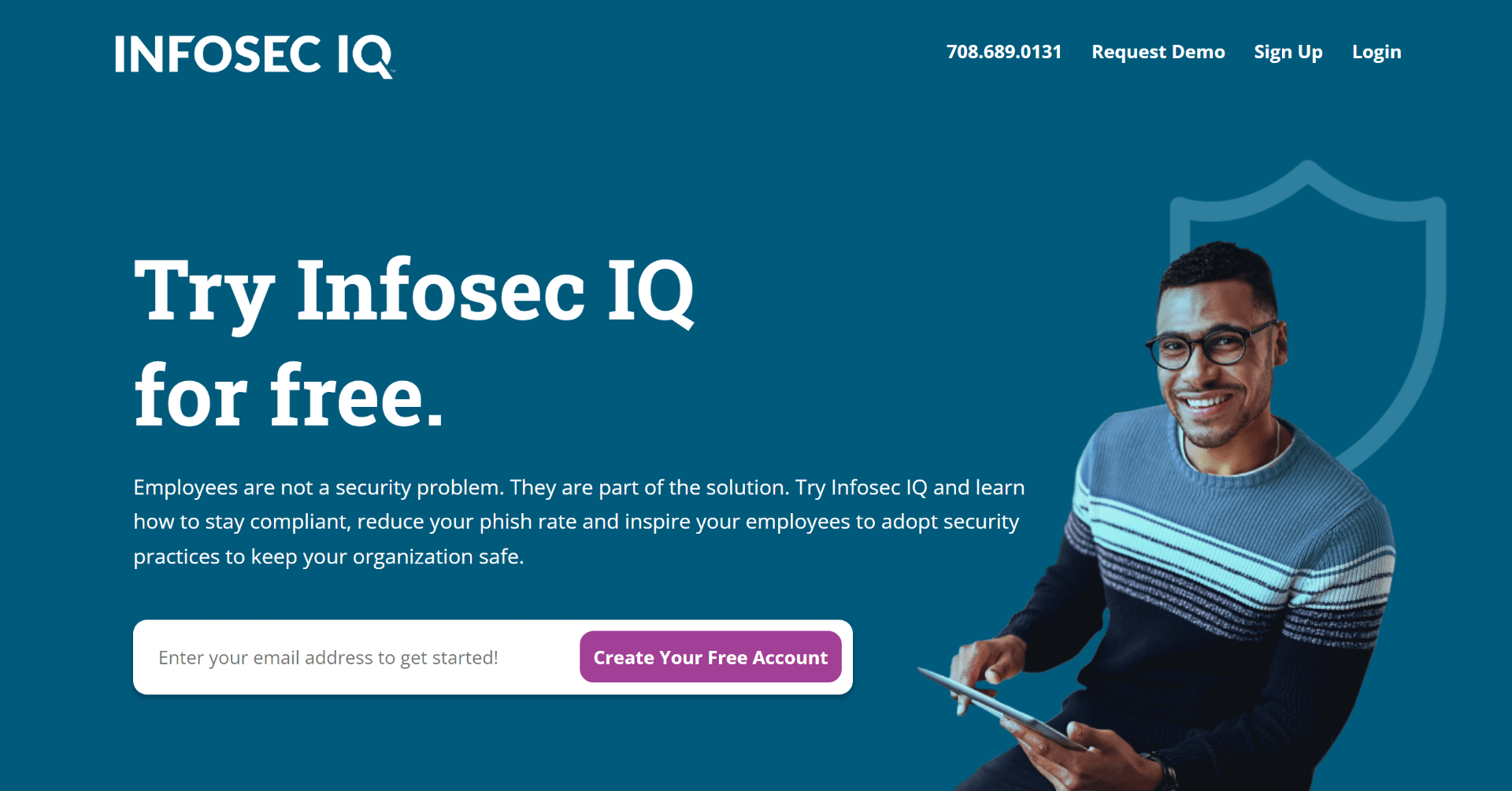
This is another security awareness and phishing simulation platform that helps organizations reduce human error and strengthen their security culture.
The tool allows users to launch realistic phishing campaigns, measure user behavior, and deliver engaging training content.
Infosec IQ also features a phishing reply tracking tool that detects and alerts users of data exfiltration attempts.
4. IRONSCALES
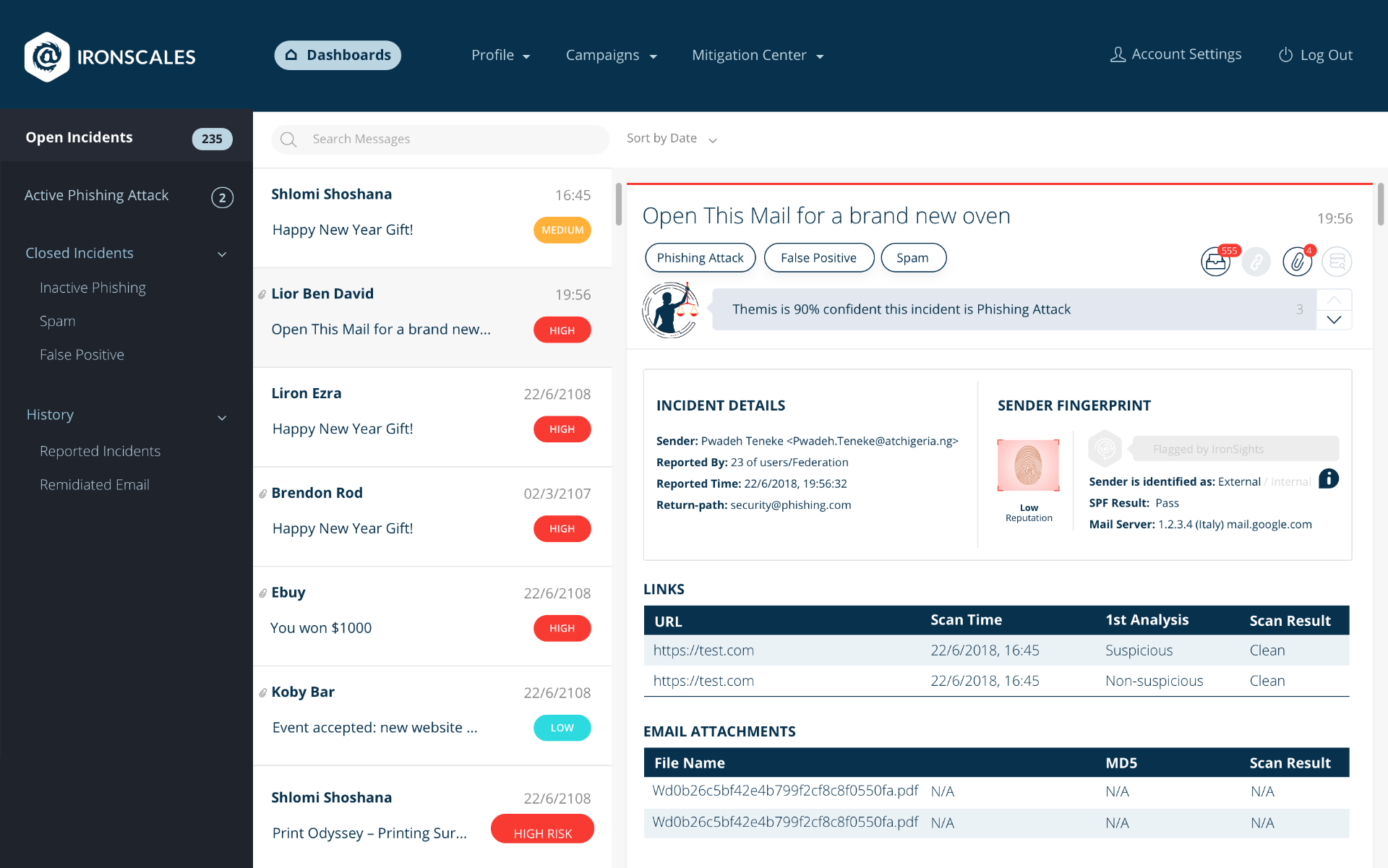
I also experimented with IRONSCALES, a self-learning email security platform that combined awareness training with phishing simulations and automated incident response.
This AI and machine learning in the tool analyze user behavior and detect threats, and they proved highly effective.
The ability to report and remediate phishing attacks with one click streamlined the process and empowered me to take swift action.
5. Proofpoint
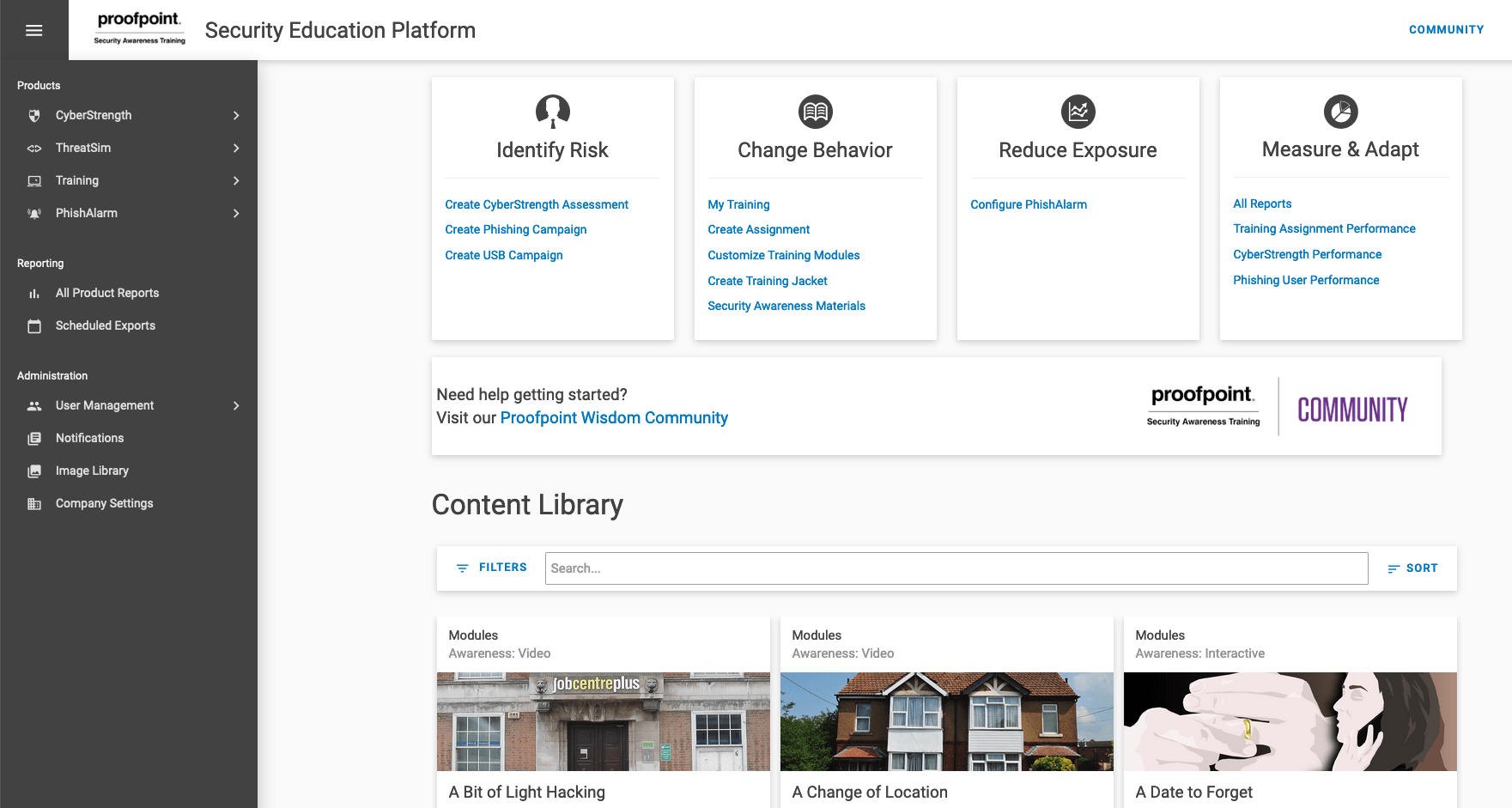
Finally, Proofpoint has been a valuable asset in changing user behavior and reducing risks.
Its interactive training modules and threat intelligence provide participants with the knowledge and tools to make informed decisions and avoid falling victim to phishing attacks.
The platform’s integration with email security and threat protection solutions also helps create a more comprehensive and robust security posture within the organization I have worked with.
Get Free Employee Training Software — All Features, Forever.
We've helped 567 companies train 200,000+ employees. Create courses in under a minute with our AI LMS or use 200+ ready-made courses on compliance, harassment, DEI, onboarding, and more!
Boost Your Security With Phishing Awareness Training
As you can see, phishing attacks are a serious threat that can affect anyone.
Cybersecurity isn’t just about complex algorithms and firewalls. It’s about you, me, and everyone else who interacts with the digital world. Those emails, texts, and social media notifications? They’re all potential doorways for hackers to exploit.
But here’s the good news: we’re not helpless. Each of us can play a crucial role in building a stronger, safer online space. By taking phishing training, you can learn to recognize the red flags, spot the tricks, and, ultimately, protect yourself and those around you.
Phishing training for employees is a continuous learning process that helps you stay ahead of the attackers. You will learn from real-life scenarios and become more confident and vigilant in your online activities.
So, what are you waiting for? Take the first step towards a safer online world. Let’s join forces and create a future where cybercrime is a relic of the past, not a threat to the present.
Frequently Asked Questions
How effective is employee phishing training?
Employee phishing training can reduce susceptibility to attacks by raising awareness and enhancing security measures. Interactive sessions that simulate real-world scenarios contribute to its success.
What should phishing training include?
Phishing training should cover identifying phishing emails, recognizing social engineering tactics, and reporting suspicious emails. Practical simulations, case studies, and ongoing updates keep the content relevant and impactful.
How much does phishing training cost?
Phishing training costs vary based on the provider, scope, and features. Prices can range from a few dollars per user for basic packages to higher costs for comprehensive programs with advanced features.
How often should phishing training be done?
Phishing training for employees should be conducted regularly, at least once a quarter, to reinforce awareness and adapt to evolving threats. Frequent and consistent training helps employees stay vigilant and reduces the risk of falling victim to phishing attacks.
 Tips
Tips
We’d love to hear your tips & suggestions on this article!
Get Free Employee Training Software — All Features, Forever.
We've helped 567 companies train 200,000+ employees. Create courses in under a minute with our AI LMS or use 200+ ready-made courses on compliance, harassment, DEI, onboarding, and more!

 We'd love your feedback!
We'd love your feedback! Thanks for your feedback!
Thanks for your feedback!







